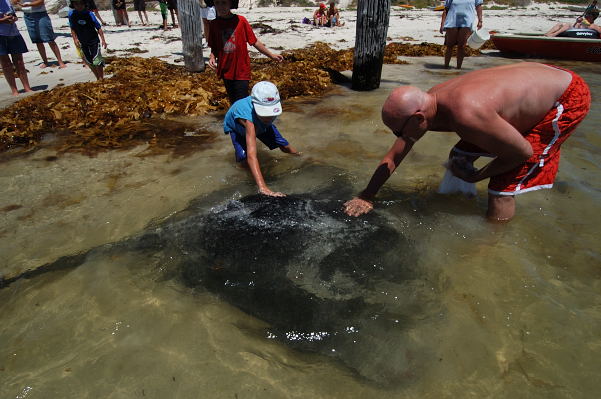|
|
|
SHARK INFO |
|
SHARK |
|
SHARK EVOLUTION |
|
|
|
SHARK DIVING |
|
SHARK DIVING 101 |
|
|
|
CONSERVATION |
|
|
|
PHOTOGRAPHY |
|
SHARK PHOTO TIPS |
|
|
|
RESOURCES |
|
|
|
WEB STUFF |
|
WHAT IS ELASMODIVER? Not just a huge collection of Shark Pictures: Elasmodiver.com contains images of sharks, skates, rays, and a few chimaera's from around the world. Elasmodiver began as a simple web based shark field guide to help divers find the best places to encounter the different species of sharks and rays that live in shallow water but it has slowly evolved into a much larger project containing information on all aspects of shark diving and shark photography. There are now more than 10,000 shark pictures and sections on shark evolution, biology, and conservation. There is a large library of reviewed shark books, a constantly updated shark taxonomy page, a monster list of shark links, and deeper in the site there are numerous articles and stories about shark encounters. Elasmodiver is now so difficult to check for updates, that new information and pictures are listed on an Elasmodiver Updates Page that can be accessed here:
|
|
_ |
|
STINGRAY CITY ON STEROIDS
|
|
Hamelin Bay is Western Australiaís answer to Stingray city. Itís a great place to interact with big friendly stingrays but itís a long way from Grand Cayman in more ways than one. Down under the action takes place from shore. For decades, sport fishing boats have entered the bay to clean their catches on the remains of an old jetty on the beach. The scraps are thrown into the ocean and over time the local marine life have become expectant of a free meal. Most noticeable among the eager diners are large rays that swim right into the shallows in the hope of a snack. The fishermen are now able to hand feed them in just a few inches of water to the delight of the tourists who paddle in to join in the fun and pet the rays as they suck up the food. There are two main species that come to lunch each day; Thorntail or Black stingrays (Dasyatis thetidis) and Southern bat rays (Myliobatis australis). The Thorntails are monsters weighing in at hundreds of pounds. When they lumber up to the shoreline the children scream and run from the water only to return with fish parts, and squeal with delight as the rays suck up the scraps straight from their hands. So big are the Thorntail rays (up to almost 2 meters wide) that when they come into shallow water their backs protruding above the surface look like rocks. Itís Stingray City on steroids. The Bat rays or Eagle rays as they are also called, cruise the shore line on busy days dredging any food from the sand that has not been vacuumed up by the Thorntails. They flap back and forth about a meter from shore with their wing-like pectoral fins slapping in and out of the water. Oblivious to the crowds of people shuffling towards them in the shallows, they occasionally end up under foot but neither they nor the Thorntails show any aggressive behavior towards the humans. I decided to don a wetsuit and snorkel out to deeper water to see where the rays go between meals. Itís a little frigid that far south being at the edge of the Southern Ocean and I kicked hard to keep warm. Maneuvering between the old pier pilings I dove down to the seabed and immediately disturbed the biggest stingray I have ever seen. It took off into deeper water leaving a mushroom cloud of sand that brought the visibility down to a few feet. There have been a couple of attacks at this beach and it crossed my mind that with so much fish blood in the water I was probably asking for trouble kicking around on my own this far out to sea. Funny how the whole mood of a day can change when you start to consider such things. Swimming back to shore I was able to get so close to the Southern bat rays that I could see the pale blue stripes on their backs. Normally they bolt as soon as you see them but these desensitized individuals were not skittish at all unless I swam straight for them. It was a great encounter. Hamelin is a long way to go for a break but if youíre sharking your way along the coast of Western Australia, itís a fun place to hit the beach and catch a few rays (Iíve always wanted to say that). Back to Elasmodiver Trip Reports Elasmodiver Home
|






















